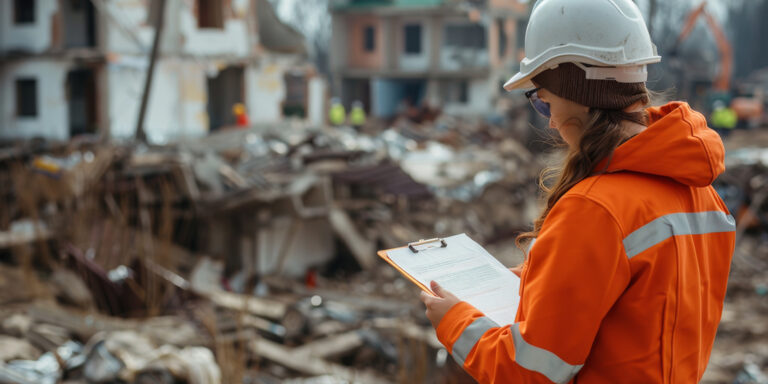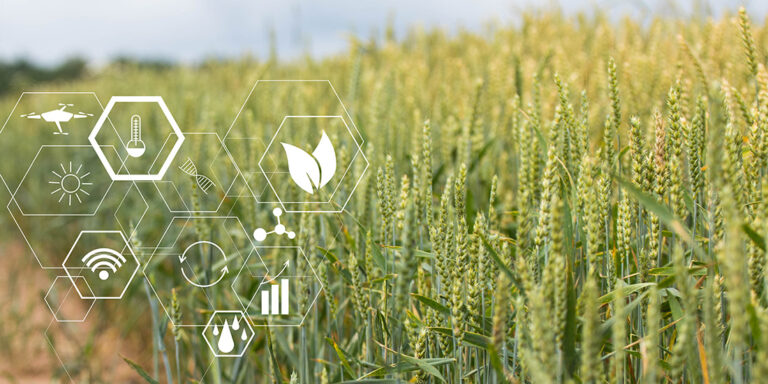
Article Archive by Year

After the conclusion of a large-scale event, the planning for its next iteration starts again. If the public doesn’t notice emergency management’s moving parts during an event, it’s a success.

Advisory Board Spotlight: Interview with Robert DesRosier Sr.
November 6, 2024
Robert DesRosier Sr., former director of Blackfeet Tribal Emergency Management and Homeland Security, discussed his journey into emergency management with Domestic Preparedness Journal editor Catherine Feinman. Beginning with his career as a first responder and his role in the Blackfeet Nation, he highlighted the importance of domestic preparedness and

Growing Foreign Threats to National Security, Part 2: Emergency Management Approaches and Choices
October 30, 2024
This is Part 2 of a two-part article that explores the nation-state threat and its implications for the emergency management community regarding the operations, resilience, resourcing, strategies, and policies necessary to better prepare for future events.

Local-Level Planning for National-Level Threats
October 30, 2024
The authors in this October edition of the Domestic Preparedness Journal share their knowledge and best practices for protecting communities from cybercriminals, nation-state threat actors, and transnational criminal organizations. These threats, which used to be typically handled at the state and national levels, are now local-level concerns that require robust

Advisory Board Spotlight: Keeping It Real With Lynda Zambrano
October 30, 2024
Lynda Zambrano is on the advisory board for the Domestic Preparedness Journal. Lynda is the executive director of the Northwest Tribal Emergency Management Council and the National Tribal Emergency Management Council, and has been inducted into the International Association of Women in Emergency Management’s Hall of Fame. She sat down with

Growing Foreign Threats to National Security, Part 1: Challenges and Considerations
October 23, 2024
Part 1 of a two-part series explores the nation-state threat and its implications for the emergency management community, regarding the operations, resilience, resourcing, strategies, and policies necessary to better prepare for future events.

The Ethics of Data in Disaster Management and Crisis Operations
October 23, 2024
As the demand for evidence-based decision-making continues to grow, emergency management professionals must commit to ethical data practices that respect the needs of the community and the rights of individuals. In times of crisis, data can save lives, but only if managed with care, responsibility, and respect for ethical principles.

Advisory Board Spotlight: Interview with Ray Barishansky, DrPH
October 23, 2024
Ray Barishansky, DrPH, is on the advisory board for the Domestic Preparedness Journal and has a passion for public health and emergency management. He sat down with the Journal’s Nicolette Casey to share his story. Learn about Dr. Barishansky’s journey from an EMT to a Doctor of Public Health.

Cyber and Physical Resilience in the Food and Agriculture Industry
October 16, 2024
Despite low profit margins and major setbacks caused by natural hazards and disasters, the food and agriculture sector continues to find innovative solutions. Balancing and integrating new concepts and technological advancements with an old-school farming mentality will keep this sector resilient and thriving when battling cyber and environmental threats.

Backyard Cybersecurity: The Local Challenge
October 16, 2024
The modern world increasingly relies on rapidly advancing digital technology, and cybercriminals progressively focus on ways to exploit technology’s vulnerabilities. Although higher levels of government and businesses may possess the tools necessary to protect against cyberattacks, local governments often do not.
A Look Behind Security Management at Two Iconic Holiday Celebrations
November 13, 2024
After the conclusion of a large-scale event, the planning for its next iteration starts again. If the public doesn’t notice emergency management’s moving parts during an event, it’s a success.
Advisory Board Spotlight: Interview with Robert DesRosier Sr.
November 6, 2024
Robert DesRosier Sr., former director of Blackfeet Tribal Emergency Management and Homeland Security, discussed his journey into emergency management with Domestic Preparedness Journal editor Catherine Feinman. Beginning with his career as a first responder and his role in the Blackfeet Nation, he highlighted the importance of domestic preparedness and
Growing Foreign Threats to National Security, Part 2: Emergency Management Approaches and Choices
October 30, 2024
This is Part 2 of a two-part article that explores the nation-state threat and its implications for the emergency management community regarding the operations, resilience, resourcing, strategies, and policies necessary to better prepare for future events.
Local-Level Planning for National-Level Threats
October 30, 2024
The authors in this October edition of the Domestic Preparedness Journal share their knowledge and best practices for protecting communities from cybercriminals, nation-state threat actors, and transnational criminal organizations. These threats, which used to be typically handled at the state and national levels, are now local-level concerns that require robust
Advisory Board Spotlight: Keeping It Real With Lynda Zambrano
October 30, 2024
Lynda Zambrano is on the advisory board for the Domestic Preparedness Journal. Lynda is the executive director of the Northwest Tribal Emergency Management Council and the National Tribal Emergency Management Council, and has been inducted into the International Association of Women in Emergency Management’s Hall of Fame. She sat down with
Growing Foreign Threats to National Security, Part 1: Challenges and Considerations
October 23, 2024
Part 1 of a two-part series explores the nation-state threat and its implications for the emergency management community, regarding the operations, resilience, resourcing, strategies, and policies necessary to better prepare for future events.
The Ethics of Data in Disaster Management and Crisis Operations
October 23, 2024
As the demand for evidence-based decision-making continues to grow, emergency management professionals must commit to ethical data practices that respect the needs of the community and the rights of individuals. In times of crisis, data can save lives, but only if managed with care, responsibility, and respect for ethical principles.
Advisory Board Spotlight: Interview with Ray Barishansky, DrPH
October 23, 2024
Ray Barishansky, DrPH, is on the advisory board for the Domestic Preparedness Journal and has a passion for public health and emergency management. He sat down with the Journal’s Nicolette Casey to share his story. Learn about Dr. Barishansky’s journey from an EMT to a Doctor of Public Health.
Cyber and Physical Resilience in the Food and Agriculture Industry
October 16, 2024
Despite low profit margins and major setbacks caused by natural hazards and disasters, the food and agriculture sector continues to find innovative solutions. Balancing and integrating new concepts and technological advancements with an old-school farming mentality will keep this sector resilient and thriving when battling cyber and environmental threats.
Backyard Cybersecurity: The Local Challenge
October 16, 2024
The modern world increasingly relies on rapidly advancing digital technology, and cybercriminals progressively focus on ways to exploit technology’s vulnerabilities. Although higher levels of government and businesses may possess the tools necessary to protect against cyberattacks, local governments often do not.
Follow Us
Get Instant Access
Subscribe today to Domestic Preparedness and get real-world insights for safer communities.
ARchives
Article Out Loud – Security in and Around D.C.: Following the Informational Dots
September 11, 2024
Full article by Catherine L. Feinman, an Article Out Loud from Domestic Preparedness, September 11, 2024. In this feature article, the editor-in-chief of Domestic Preparedness shares her key takeaways from a recent interoperability summit focused on Preparing for the 60th Presidential Inauguration. Public safety agencies shared their lessons learned
Article Out Loud – National Preparedness Month 2024: Talk About It
September 4, 2024
Full article by Ian Pleet, an Article Out Loud from Domestic Preparedness, September 4, 2024. In this feature article, an emergency management professional highlights the country’s preparedness goals and identifies available federal resources. By educating and empowering individuals and families to prepare for emergencies, communities can better position themselves
Article Out Loud – Vulnerability and Exploitation: Human Trafficking After Natural Disasters
August 28, 2024
Full article by Benjamin Thomas Greer and Nathan DiPillo, an Article Out Loud from Domestic Preparedness, August 28, 2024. In this feature article, a subject matter expert in the field of human trafficking and child sexual exploitation and an emergency manager warn of the looming emerging threat that human
Article Out Loud – Dual-World Tabletop Exercises: Addressing Unmet Infrastructure Needs
August 21, 2024
Full article by Charles (Chuck) L. Manto, an Article Out Loud from Domestic Preparedness, August 21, 2024. In this feature article, a consultant and developer focused on protecting telecommunications networks and data centers presents a new tabletop exercise concept. Similar to medical research groups that involve treatment and control
Article Out Loud – Realizing the Power of Community in Disaster Recovery
August 21, 2024
Full article by Aaron Clark-Ginsberg, an Article Out Loud from Domestic Preparedness, August 21, 2024. In this feature article, a behavioral and social scientist understands that no two communities are the same. Each community has unique vulnerabilities, capacities, and needs, and each has its own leaders, areas of cooperation,
Article Out Loud – Return on Investments in Public Engagement
August 14, 2024
Full article by June Isaacson Kailes, an Article Out Loud from Domestic Preparedness, August 14, 2024. In this feature article, a disability policy consultant reminds community leaders that public engagement and participation involve community members in problem-solving, decision-making, and policy development. Result-centered engagement can help protect people with disabilities and
Article Out Loud – Bridging Preparedness: State Medication Reserves for Pandemics and Beyond
August 14, 2024
Full article by Angie Im, an Article Out Loud from Domestic Preparedness, August 14, 2024. In this feature article, a healthcare research and policy expert points out that new human cases of highly pathogenic avian influenza have been confirmed in the United States. Although most cases like this do
Article Out Loud: Lessons in Social Media – Preparing Kids and Community Leaders for Disasters
August 7, 2024
Full article by Patricia Frost and Michael Prasad, an Article Out Loud from Domestic Preparedness, August 7, 2024. In this feature article, the vice chair of the National Pediatric Disaster Coalition and a certified emergency manager work together to prepare children and community leaders for disasters. Leveraging social media
Article Out Loud – A Homeland Vulnerability Continues
August 7, 2024
Full article by Robert C. Hutchinson, an Article Out Loud from Domestic Preparedness, August 7, 2024. In this feature article, a former police chief and deputy special agent in charge with the U.S. Department of Homeland Security, Homeland Security Investigations in Miami, Florida, revisits the U visa process. The
Article Out Loud – What Level of Ugly Are Communities Prepared For?
July 31, 2024
Full article by Joseph J. Leonard Jr., an Article Out Loud from Domestic Preparedness, July 31, 2024. In this feature article, a retired U.S. Coast Guard commander reflects on the July 2024 attempted assassination of Former President Donald Trump. That incident raises questions about event security, the roles that
Follow Us
Get Instant Access
Subscribe today to Domestic Preparedness and get real-world insights for safer communities.


